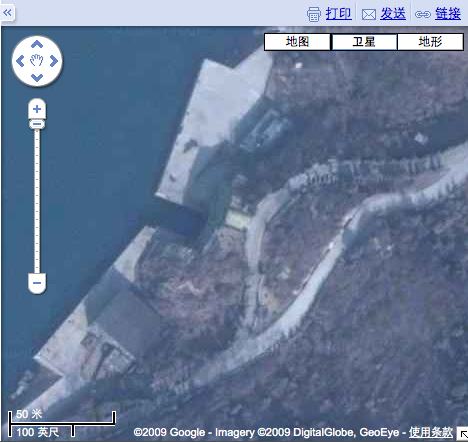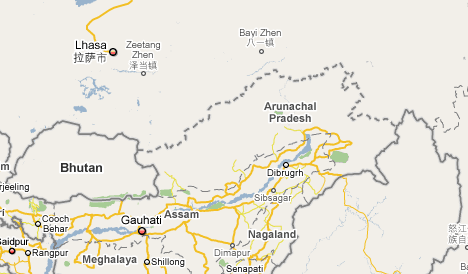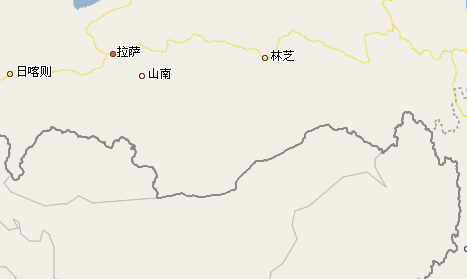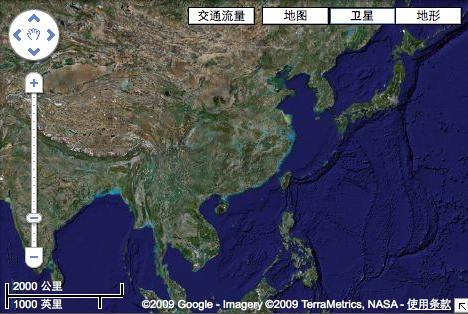News item one: The People’s Daily Online reports today that China’s government will develop a national GIS platform “inspired by” Google Earth, aimed in part at the general public.
News item two: While fact-checking a cynical take I was about to write on the above, I noticed that Google’s Chinese-language mapping site, which long had no satellite imagery layer, now does. Moreover, it is uncensored! That’s surprising and encouraging, and must have happened in the last month or two. Here’s a “secret” Chinese underground submarine base from the Chinese site:

But first, here’s more about that new national geographic platform. Reports the People’s Daily Online:
The move, disclosed at a national conference for directors of surveying and mapping bureaus held on January 14, marks fundamental changes in China’s traditional services to supply basic geographic information. Upon completion, the program will provide comprehensive online geographic information services similar to “Google Earth” and “Google Maps” to all types of institutions and to the general public.
What’s the official motivation?
Because the needs of the society are getting bigger, and because the demands coming from Government institutions, enterprises and individuals for authoritative and reliable online maps and geographic information services are increasing on a daily basis, there is now a pressing need to provide online national multi-scale and multi-type geographic information resource services for a comprehensive use.
Reading between the lines, I can think of two specific reasons for this change of heart:
- It was embarrassing that everyone but the Chinese could see satellite imagery of Beijing transformed by glorious new stadiums during the Olympics. In fact, there were plenty of informal ways for those behind the Great Chinese Firewall to see the imagery — just not officially.
- The earthquake in Sichuan on May 12, 2008, drove home beyond all doubt to Chinese leaders what a huge boon easy access to satellite imagery is in disaster relief operations. (That earthquake struck just a week after China announced it would investigate Google Maps for maps “that wrongly depict China’s borders or that reveal military secrets.”)
So why not use Google Earth, like the rest of the world does? Just as with India, which is also building a Google Earth clone, China still has issues about borders on maps that it disagrees with. Both in China and in India, publishing maps with the “wrong” borders and labels is illegal. As Google serves its Chinese maps from servers on Chinese territory, where they are beholden to Chinese law, Google has accommodated this problem by producing one government-sanctioned version for inside the Chinese firewall, and one for the rest of the world, which shows disputed territories properly. For example, Here’s how Arunachal Pradesh looks in Google Maps outside China:

And here is the same view for inside China:

Google Maps, then, is adaptable to the Chinese market, but Google Earth is not served from within China, and shows just one universal set of border data. Google Earth isn’t blocked in China, so Chinese citizens do have access to it, but I suspect it just won’t do for government-sanctioned use, as that would be tantamount to accepting an outside view of its borders.
Another hint that China remains worried about borders but not any longer about satellite imagery is that the imagery layer in Chinese Google Maps comes without any border/label overlay option at all. It is just pure satellite imagery — you can’t even tell where China ends and India begins. It’s clear that a straight port from the international border/label overlay would not be acceptable; best not to have any information at all than the “wrong” information.

In sum, all this news implies progress towards a more open and relaxed attitude by China’s leadership when it comes to mapping tools not crippled by government controls and censorship. It’s a step in the right direction, though in other domains the road remains long.